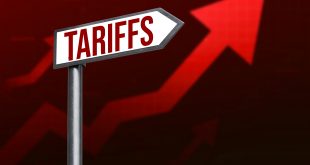The US dollar kicked off the week on a stronger note, clawing back some ground after President Donald Trump dialed back his threats of steeper tariffs on Chinese goods. This shift in tone, coupled with Treasury Secretary Bessent’s reassurance that 100% tariffs aren’t inevitable and hints of a potential meeting with Chinese President Xi in Korea, injected a dose of optimism into markets.
Yet, this apparent de-escalation raises a critical question: Is this dollar strength a genuine recovery or merely a fleeting pause in an era of escalating geopolitical friction? The argument here is clear—while short-term relief can spark gains, persistent uncertainties in trade and monetary policy demand a measured approach from investors and traders, who should prioritize staying fully informed and exercising reasonable caution.
Unpacking the Dollar’s Momentum and Global Ripples
The US Dollar Index climbed 0.43% to 99.28, flirting with two-month highs around 99.56 seen on October 9. This uptick reflects how quickly sentiment can swing on diplomatic cues, but it’s tempered by dovish signals from within the Federal Reserve. Philadelphia Fed President Anna Paulson’s recent comments highlighted a softer stance, capping the greenback’s advance and underscoring the Fed’s internal debates on balancing growth and inflation.
This dollar dynamics spilled over to major pairs. The euro slid 0.46% against the dollar amid ongoing turmoil in France, where reappointed Prime Minister Sebastien Lecornu faces challenges in stabilizing the government. Plans to trim the budget deficit to 4.7% by 2026 offer a glimmer of fiscal discipline, but they also highlight Europe’s broader vulnerabilities. Meanwhile, the pound dipped 0.13%, hovering in a consolidation range between 1.3260 and 1.3370.
Bank of England official Greene noted stronger-than-expected economic activity, bolstering the case for higher rates, yet this contrasts with global pressures that could force a rethink.
On the Asian front, the yen weakened as USD/JPY reclaimed 152.00, hurt by improved risk appetite that sidelined safe-haven currencies. The Australian dollar, however, bucked the trend with a 0.62% gain, rebounding above 0.6500 after the Reserve Bank of Australia’s steady rates decision. These movements illustrate a key point:
Trade rhetoric from leaders like Trump can ignite volatility, but underlying economic divergences—such as differing inflation paths and policy responses—often dictate longer-term trends. Opponents might argue that this dollar surge signals robust US exceptionalism, yet history shows similar trade thaw moments, like post-2019 US-China deals, often unravel amid fresh disputes, eroding gains.
Key Events on the Horizon: What Could Shift the Balance?
Tuesday’s calendar packs potential catalysts that could either solidify or shatter the dollar’s footing. Fed Chair Jerome Powell’s speech looms large, with markets parsing for hints on rate trajectories—anything less than hawkish could accelerate shifts toward risk assets. In Europe, Germany’s inflation data and ECB official Mario Cipollone’s remarks will shed light on the bloc’s fight against stagnation, potentially weakening the euro further if figures disappoint.
The UK’s September employment numbers could reinforce or challenge Greene’s optimistic view, influencing sterling’s range-bound behavior. Down under, the Reserve Bank of Australia’s meeting minutes, released during Asia’s session, will be scrutinized for clues on future hikes, especially as the Aussie dollar eyes stability. And let’s not overlook gold’s surge past $4,100, poised for $4,150 if Powell leans dovish—this metal’s resilience amid currency flux serves as a barometer of investor unease, reminding us that safe-haven demand often spikes when trade optimism fades.
Looking ahead, expect more twists as these events unfold. What needs to happen for sustainable stability? Policymakers must prioritize consistent dialogue over brinkmanship, as erratic tariffs risk derailing global recovery. Similar episodes in the past, like the 2018 trade skirmishes, teach that quick wins rarely endure without structural agreements. This time, with inflation still simmering and elections influencing decisions, the stakes feel higher—demanding agility from markets.
In navigating these waters, the path forward hinges on vigilance. Geopolitical easing may offer breathing room, but with monetary policies in flux and trade risks simmering, the dollar’s trajectory remains precarious. Investors and traders would do well to stay attuned to these developments, embracing caution to weather whatever storms lie ahead.

 Noor Trends News, Technical Analysis, Educational Tools and Recommendations
Noor Trends News, Technical Analysis, Educational Tools and Recommendations



